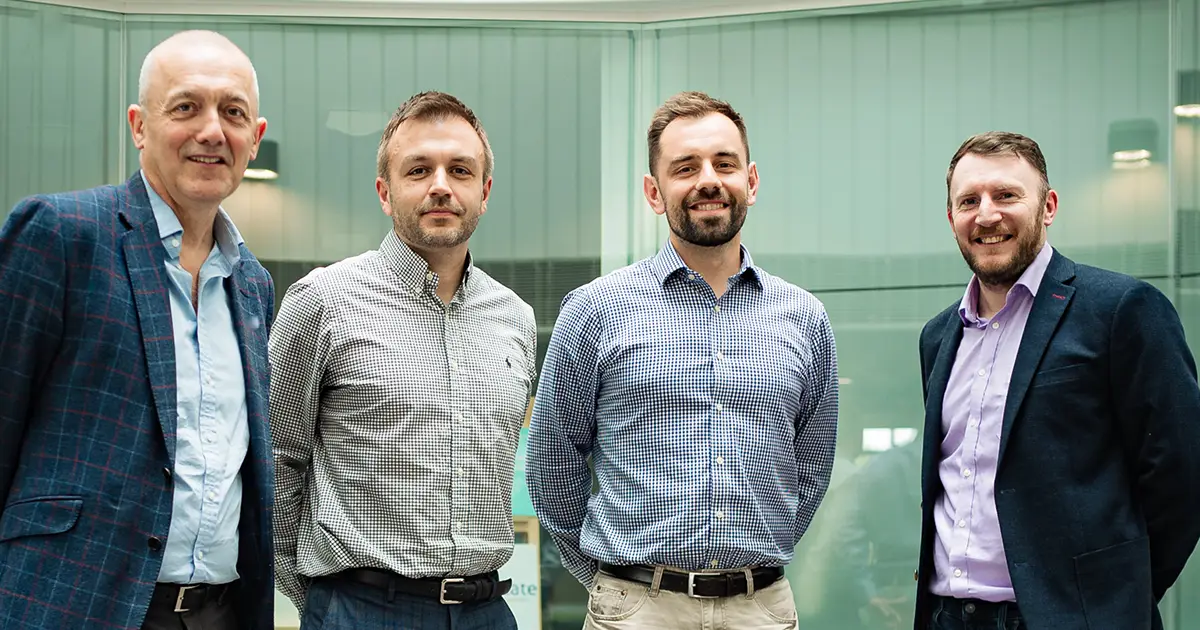With the pace of change accelerating across industries, we sat down with Intoware’s leadership team to explore what’s driving digitalisation, the challenges companies face when looking to make the leap to digital SOPs, and how technology like our WorkfloPlus is shaping the future of work.
What’s driving digital transformation today?
Keith: “It varies by sector, but the key drivers are consistent: Efficiency, data-informed decision-making, and compliance. Increasingly, sustainability and employee expectations are also pushing businesses to look toward digital SOPs and work instructions.”
Lee: “There are two sides to it. One is from an operational perspective – driving efficiency, improving accuracy, better audit records and observability. The other is about deriving more value from existing processes, whether that’s through automation or better data integration.”
Sean: “For many, it’s about avoiding issues before they arise. We’ve seen clients move from manual inspections to digital workflows that ensure consistency and reduce risk.”
Brad: “There’s also a knowledge retention angle. Digital SOPs help preserve the expertise of senior staff, which is vital as industries face growing skills gaps.”
What are the biggest challenges companies face when going digital?
Keith: “Resistance to change is a big one, especially from frontline workers. That’s why early engagement, training and clear communication are essential. Equally, digital transformation is often perceived as requiring significant investment, but if you start small with pilot projects, the return on investment will be proved. By utilising products such as WorkfloPlus you then have a scalable, cloud-based solution that is low cost on entry.”
Lee: “People often think digital transformation is just swapping paper for tablets. But it’s about rethinking the process itself, why it exists, how it works, and what it’s meant to achieve. Digital transformation encompasses more than just the addition of digital tools and processes but also the change of operational behaviours and workforce allocation and responsibility. This is typically a challenging thing for a business to accomplish and takes time, and consideration. Companies that do this well, with our guidance, see much better results.”
Sean: “Security is another concern. We take that seriously, with ISO27001 certification and industry best-practice architecture to ensure that our customers’ data is kept safe.”
Brad: “The key challenges are budget, willingness to change and time to create digital workflows. People are busy, and trying to interact with key people who can see the huge short and long-term benefits is paramount. This is a different kind of challenge as talking to the wrong person can sometimes be a waste of time.”
Which sectors are most ripe for transformation?
Keith: “Manufacturing, utilities, and aviation MRO are all seeing strong demand. These industries rely heavily on manual processes and face strict compliance requirements.”
Sean: “Highways is another. Every project needs a detailed audit trail from pre-condition to post-work evidence. Digital SOPs make that seamless.”
Brad: “We’re also seeing growth in rail and construction, where paper-based systems are still common. There’s a huge opportunity to modernise.”
How is the landscape evolving?
Lee: “There’s been a shift from one-off projects to continuous transformation. Companies want real-time data, seamless integrations, and measurable outcomes.”
Sean: “AI is playing a bigger role too, not just for automation and creation of digital SOPs and digital work instructions, but for insights and decision support. But it’s still humans who define the strategy.”
Brad: “We’re seeing more demand for mobile-first, offline-capable tools. Frontline workers need access to digital SOPs wherever they are.”
And what about the role of people in all this?
Keith: “AI is an engine – but humans are still the drivers. We provide the empathy, creativity, and judgement that machines can’t replicate.”
Lee: “It’s about enabling people to do more of what they’re best at. Let AI handle the repetitive tasks so humans can focus on high-value work.”
Sean: “Successful transformation is more about people than technology. Change management, communication, and culture are key.”
Brad: “AI is designed to take away the time-consuming elements of work while humans play a critical role of authority. The use of AI in digital SOPs will be a must moving forward, to enhance further productivity and automation, whilst maintaining humans in the loop authority.”
Final thoughts?
Brad: “Digital work instructions aren’t just about automation and workflows. They’re about connecting people, systems, and data to work smarter. And with tools like WorkfloPlus, that transformation is more accessible than ever.”
Meet the Panel:

Keith Tilley
Chief Executive Officer
Connect on LinkedIn

Lee McDonald
Chief Technology Officer
Connect on LinkedIn

Sean Hennelly
Chief Operating Officer
Connect on LinkedIn

Brad Flook
Chief Revenue Officer
Connect on LinkedIn

